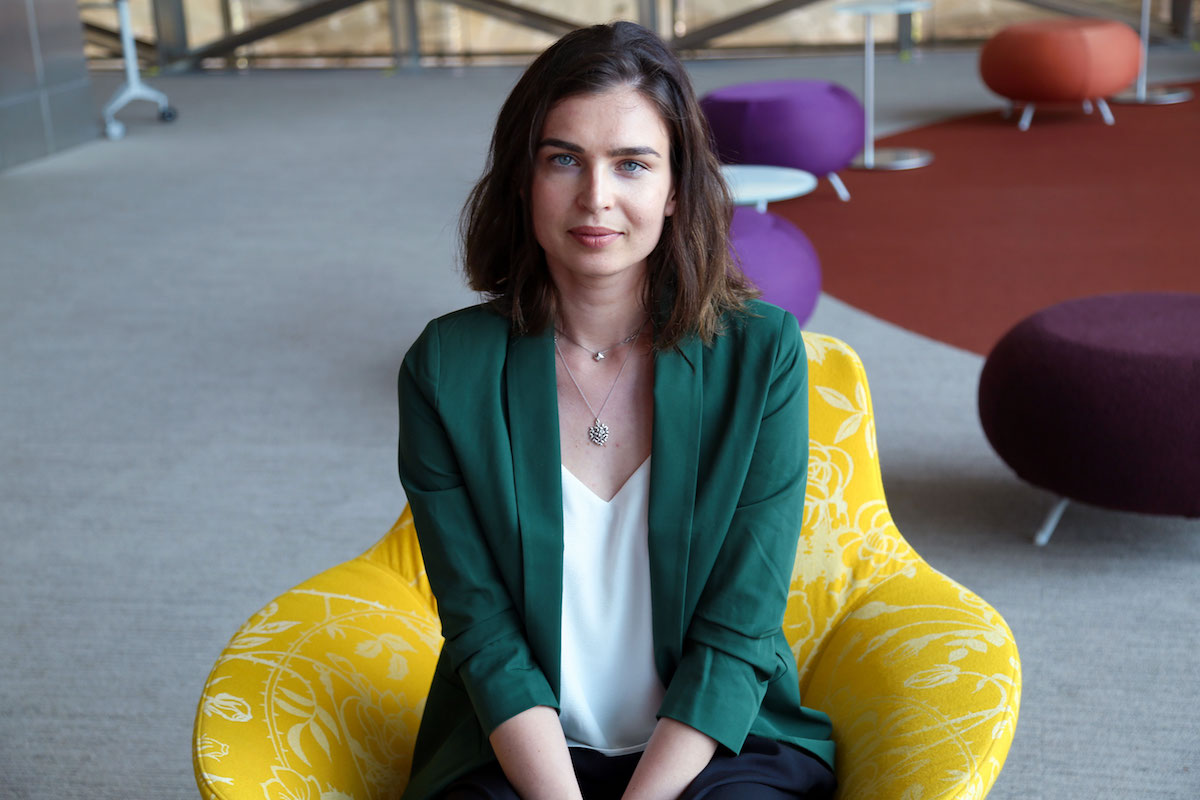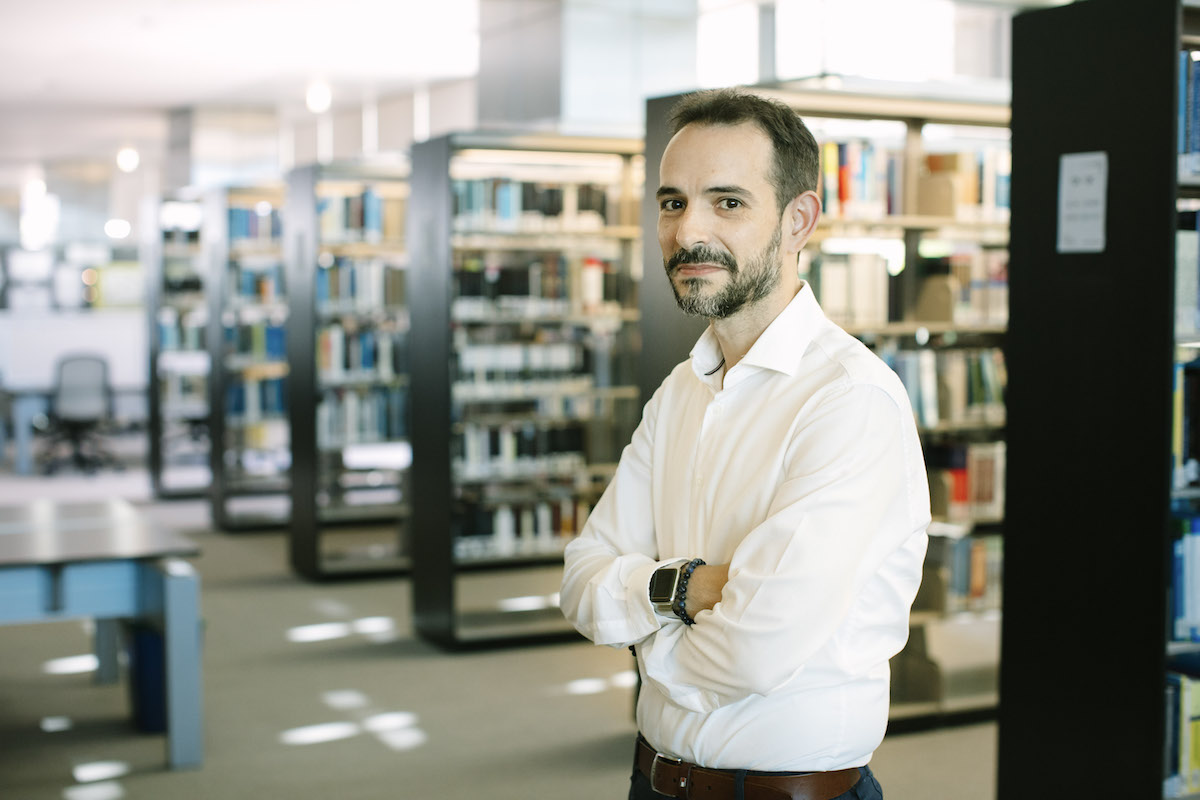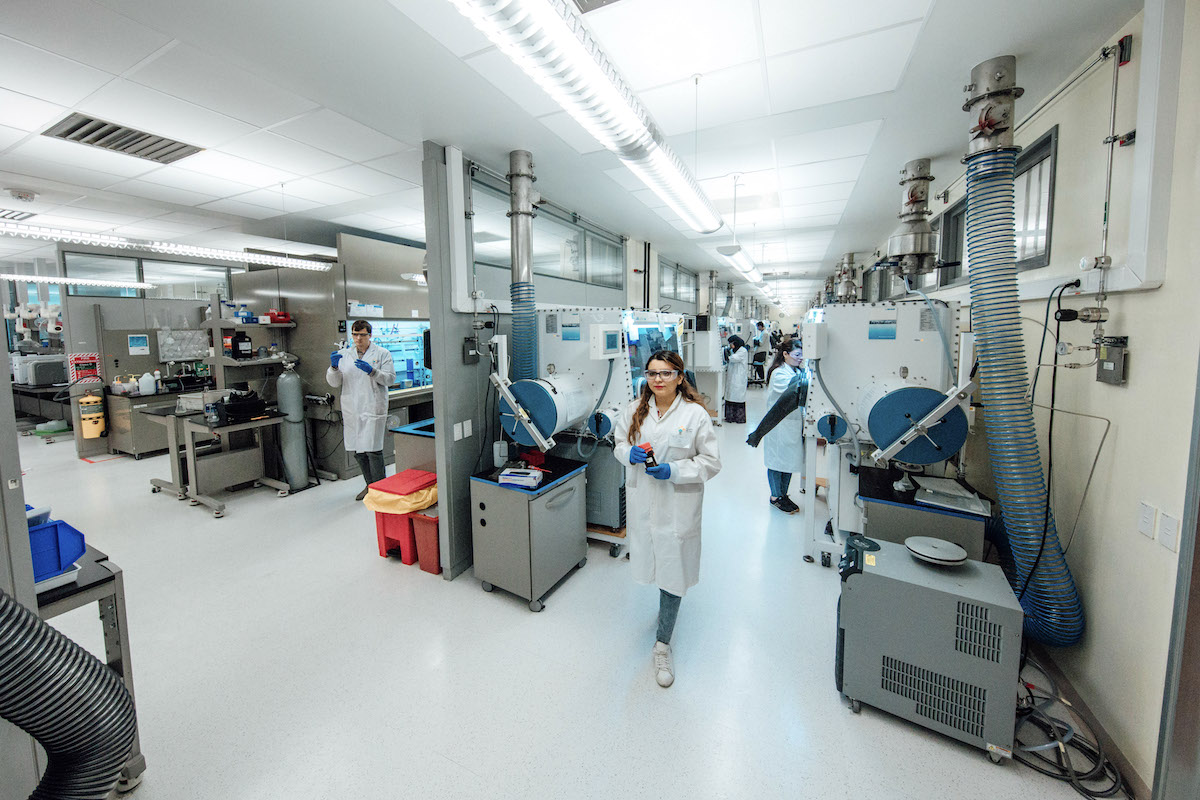Postdoctoral Fellow Focus: Anastasiya Bavykina

KAUST postdoctoral fellow Anastasiya Bavykina works with Professor Jorge Gascon, the director of the University's Catalysis Center, in his Advanced Catalytic Materials research group. Photo by Meres J. Weche.
-By Tanya Petersen, KAUST News
KAUST postdoctoral fellow Anastasiya Bavykina is a member of Professor Jorge Gascon's Advanced Catalytic Materials research group in the University's Catalysis Center.
"I am not going to be original—KAUST has the best facilities one can imagine," Bavykina said. "You can find nearly every piece of equipment you might need here. That was my key point of choosing KAUST for the next step in my career—when you are almost unlimited in all the equipment and characterization tools, you can fully focus on the research and be more productive."
Originally graduating from Novosibirsk State University, Russia, Bavykina never really saw herself working in research and academia. However, her perspective changed while in the faculty of natural sciences there. She majored in analytical chemistry and worked on determining the content of organotin and mercury compounds in the liver and kidneys of Baltic seals. Although Bavykina noted the research was tedious, it proved inspiring because she spent time in the lab on something real, learning important skills and discovering how great academia could be.
After a journey from Russia to Spain and Poland for her master's degree and the Netherlands to complete her Ph.D. at Delft University of Technology, Bavykina is still passionate about connecting her research with the real world.

KAUST Professor Jorge Gascon (pictured here) is the director of the University's Catalysis Center. Postdoctoral fellow Anastasiya Bavykina is part of his research group. Photo by Anastasia Khrenova.
Her key current project is the conversion of carbon dioxide into a valuable feedstock—methanol. Methanol is a commodity chemical of high importance and demand, and it can be used as a clean fuel.
"Through the use of a new catalyst that was developed in our laboratory at KAUST, we can convert carbon dioxide to methanol with a high selectivity of around 80 percent", Bavykina said.

The facilities in the University's Catalysis Center are pictured here. 'You can find nearly every piece of equipment you might need [there],' stated postdoctoral fellow Anastasiya Bavykina. 'That was my key point of choosing KAUST for the next step in my career.' Photo by Anastasia Khrenova.
"It is one of the ultimate dreams of every scientist—to see the impact of his [or] her work on society," she noted. "I have been working on projects that are directly connected to current challenges. Methanol synthesis from carbon dioxide is one of them. Such a project can have a two-fold positive effect—reducing the emission of a greenhouse gas [while] producing a valuable chemical such as methanol."
Although passion for her research is a prominent part of her life, Bavykina discovered new interests since moving to Saudi Arabia—snorkeling and diving. She advised anyone joining the KAUST community to "prepare for scientific paradise; work hard; and buy a snorkeling mask!"
Related stories:
- Postdoctoral Fellow Focus: Adrian Galilea
- KAUST postdoctoral fellow wins Sylvia Esterby Presentation Award
-
KAUST postdoctoral fellow Elisabetta Fiacco wins topical best poster prize

